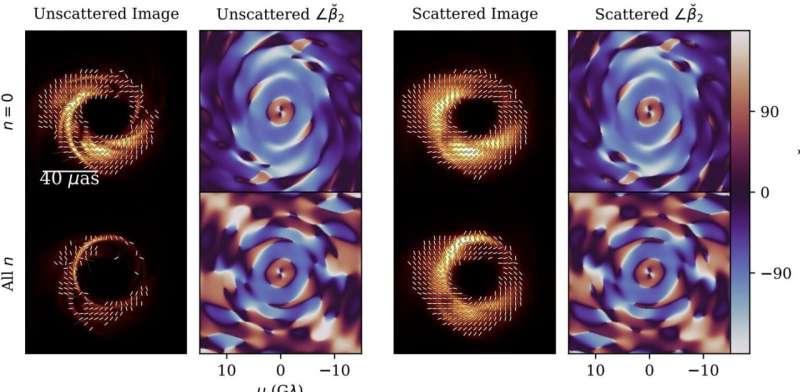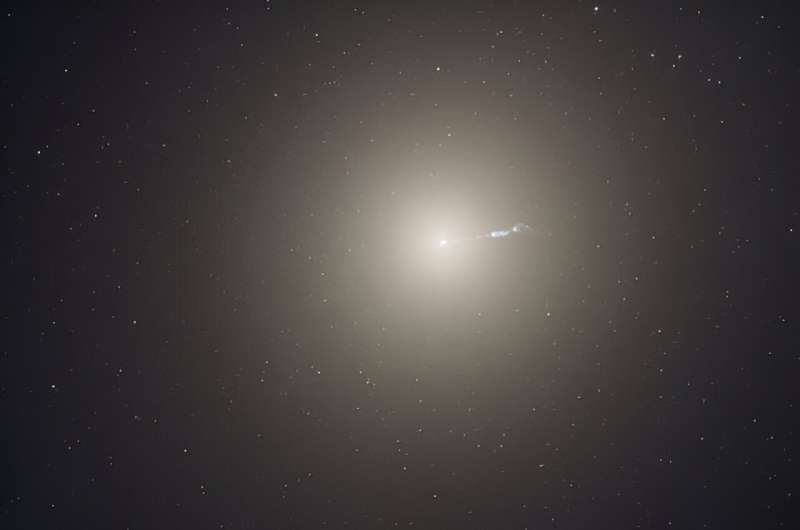This article has been reviewed according to Science X's editorial process and policies. Editors have highlighted the following attributes while ensuring the content's credibility:
fact-checked
preprint
trusted source
proofread
Next-generation Event Horizon Telescope to unlock mysteries of black holes

The prospect of actually resolving the event horizon of black holes feels like the stuff of science fiction, yet it is a reality. Already, the Event Horizon Telescope (EHT) has resolved the horizon of the black holes at the center of the Milky Way and M87.
A team of astronomers is now looking to the next generation of the EHT, which will work at multiple frequencies with more telescopes than EHT. A new paper posted to the arXiv preprint server suggests it may even be possible to capture the ring where light goes into orbit around the black hole at the center of the Milky Way.
Black holes are strange objects that are the powerhouses of many galactic phenomena. They have a complex anatomy with a singularity at the center, a point of infinite density where gravity is so intense that the laws of physics cease to work.
Surrounding the singularity is the event horizon, the boundary beyond which nothing, not even light, can escape. Just outside the event horizon is the photon ring and it is here that light is bent into a circular orbit around the singularity. Further out than this is the accretion disk, but the focus of the next generation Event Horizon Telescope will be the photon ring.
The Event Horizon Telescope's name is a little misleading, for it is not one telescope but a global network of radio telescopes that work together to act as a virtual Earth-sized radio telescope. The technology is known as interferometry, using multiple telescopes that are all connected together.
The very long baseline of the telescope, or put more simply, the fact it is virtually very big, means it has incredible resolution capabilities, allowing it to capture the event horizon around Sagittarius A* at the center of the Milky Way and also of the black hole at the center of M87.

The EHT was launched in 2009, but now, attention is turning to the next generation. The addition of 10 new dishes and a whole host of new technology will transform EHT. Modern, high-speed data transfer protocols will speed up transfer times and the addition of new dishes and technology will mean EHT will be able to observe at 86, 230 and 345 GHz simultaneously.
This allows for the use of frequency phase transfer techniques where lower frequency data can be used to supplement higher frequency. Using this will mean integration times of minutes at 345 GHz rather than seconds, opening up a whole universe of new observations such as the photon rings of black holes.
Studies of the supermassive black hole at the center of M87 and Sagittarius A* suggest a magnetically arrested accretion disk. In this accretion model, the accretion disk forms a series of irregular spiral streams and a vertical magnetic field, which is split into separate field lines, pokes through the accretion plane. As the disk rotates, the material spirals inward, dragging the field lines and twisting them around the axis of rotation, leading to the formation of jets.
These magnetically arrested disks exhibit symmetrically polarized synchrotron emissions which were used by a team of astronomers to study the detectability of the photon ring using next generation EHT.
The paper, authored by Kaitlyn M. Shavelle and Daniel C. M. Palumbo from Princeton University and Harvard & Smithsonian (respectively), shows through simulations that the planned enhancements to the EHT are likely to enable the detection of photon rings. In the analyses of the enhancements, they find that the higher sensitivity of the new EHT will likely be more critical than better processing techniques in the detection of the photon ring.
More information: Kaitlyn M. Shavelle et al, Prospects for the Detection of the Sgr A* Photon Ring with next-generation Event Horizon Telescope Polarimetry, arXiv (2024). DOI: 10.48550/arxiv.2407.09750
Journal information: arXiv
Provided by Universe Today





















